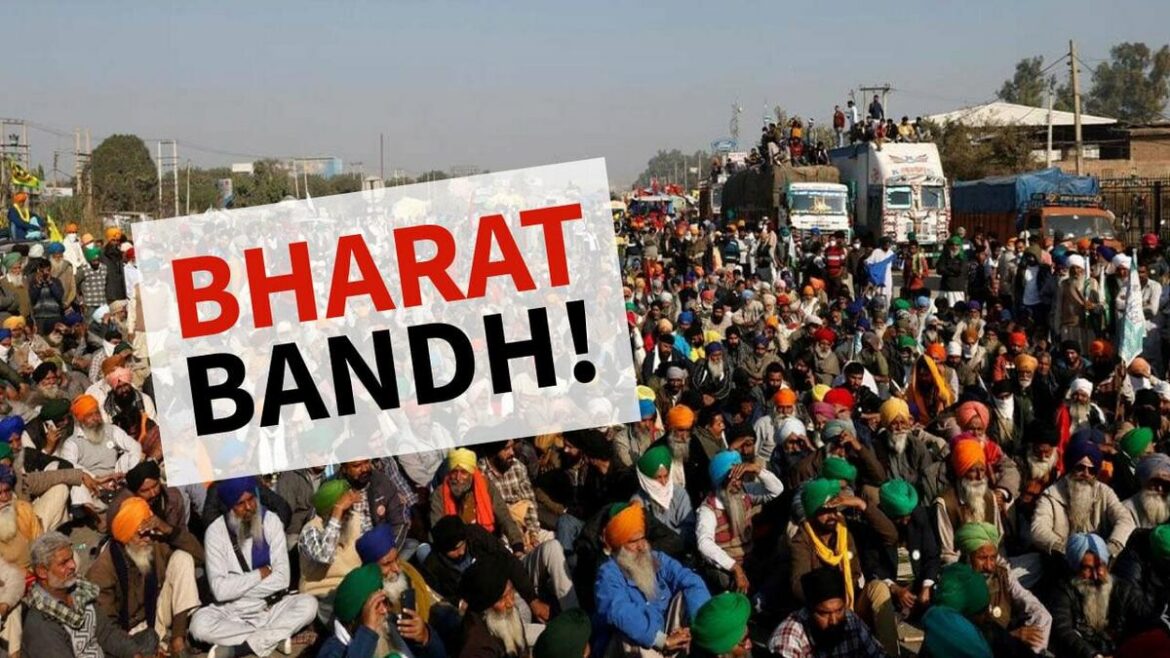Nationwide Bharat Bandh to Disrupt Services as Over 25 Crore Workers Set to Strike
On Wednesday, the country may come to a near halt. Over 25 crore workers are set to participate in a massive general strike, dubbed “Bharat Bandh,” to protest against what unions are calling the central government’s “anti-worker, anti-farmer” policies. This large-scale action, backed by 10 central trade unions and supported by farm organizations, threatens to impact banking, postal services, transport, and even mining operations across the country.
Why Are Workers Going on Strike?
The organizers accuse the government of systematically weakening the labour movement. From new labour codes to privatization push, unions argue that workers’ rights are being rolled back. Harbhajan Singh Sidhu of the Hind Mazdoor Sabha said it bluntly:
“Banking, postal, coal mining, factories, and state transport services will be affected due to the strike.”
The joint platform of trade unions has called for the strike after what they describe as months of planning and coordination with workers from both formal and informal sectors. Amarjeet Kaur of the All India Trade Union Congress (AITUC) mentioned,
“More than 25 crore workers are expected to take part in the strike. Farmers and rural workers will also join the protest across the country.”
Timeline of Events
- Last year: Unions submitted a 17-point charter of demands to Labour Minister Mansukh Mandaviya.
- Past decade: No annual labour conference convened, which unions say reflects neglect.
- Earlier strikes: Nationwide shut-downs on November 26, 2020; March 28-29, 2022; and February 16, 2023.
- This Wednesday: Strikes expected to hit public services, key industries and rural operations.
What Are the Demands?
The list is lengthy—17 in total—but here’s a breakdown of key demands driving the bandh:
- Roll back the four new labour codes.
- Stop privatization of public sector enterprises.
- Reverse outsourcing trends and job casualisation.
- Ensure job security and fair wages.
- Restore the right to unionize and collective bargaining.
These aren’t sudden concerns. The movement builds on years of discontent, and the mood among union leaders has clearly shifted from frustration to active confrontation with government policy. There’s also a strong belief among protestors that the welfare state is being dismantled.
Official Statements from Unions
In a joint press statement, the forum of trade unions said:
“The government has abandoned the welfare state status of this country and is working in the interest of foreign and Indian corporates, and it is so evident from its policies.”
The unions also flagged risks associated with the government’s four labour codes, claiming they are designed to:
- Suffocate collective bargaining efforts
- Prolong legal working hours
- Decriminalize labour law violations
- Undermine trade union strength
For many veteran labour organizers, this strike is seen as a major attempt to reclaim lost ground and reassert worker agency in national policymaking.
Farmers’ Involvement Widens the Impact
The Samyukta Kisan Morcha, a coalition of farmer unions that previously led year-long protests against farm laws, has extended its support. Alongside them, agricultural workers’ unions are also mobilizing in rural areas. This cross-section alliance adds significant weight to an already massive undertaking.
“Massive mobilizations in rural India are being planned,” said one union leader. It’s not just about policy anymore. It’s seen by many as a moral struggle—an effort to defend the rights of those left behind in a rapidly changing economy.
Community Response
Public sentiment is mixed. Some support the workers’ fight, viewing it as a counterbalance to corporate consolidation. Others, especially small business owners and salaried employees, fear disruption and economic loss.
On social media, users have voiced concern over safety and accessibility to essential services. “If banks don’t function and transport services halt, how are we supposed to go about our daily lives?” asked a worried commuter in Mumbai.
Still, there’s a quiet show of solidarity in many circles. Teaching staff, university researchers, health workers—all have expressed varying degrees of moral and logistical backing, or at least understanding.
Local Governments & Preparedness
Some state governments have issued advisories to ensure law and order, while others are watching closely. Expect increased police presence across cities, particularly in transit hubs and industrial corridors. Emergency services are likely to remain operational, but delays may occur if demands escalate or station walkouts happen.
What’s Next?
It’s hard to say if this strike will lead to any immediate shifts in government policy. Historically, such actions have brought partial rollbacks or consultations, but not always clear wins.
Will the government respond to the unprecedented numbers? Perhaps. Maybe not right away. But the pressure is real and growing.
Unions have warned that Wednesday’s action may be “just the beginning.” Talks of expanded, indefinite protests are floating, if their demands remain unmet. For now, though, all eyes are on Wednesday—to measure both turnout and lasting effect.
You’re likely to feel it, especially if you rely on bank visits, postal deliveries, or commute using public transport. Planning ahead—if that’s an option—might help in easing the day.
One thing seems clear:
The Bharat Bandh is more than a strike. It’s a signal—workers and farmers are not giving up without a fight.

